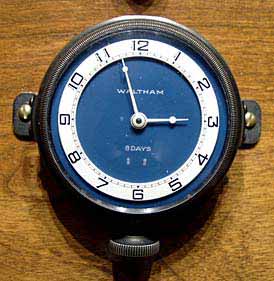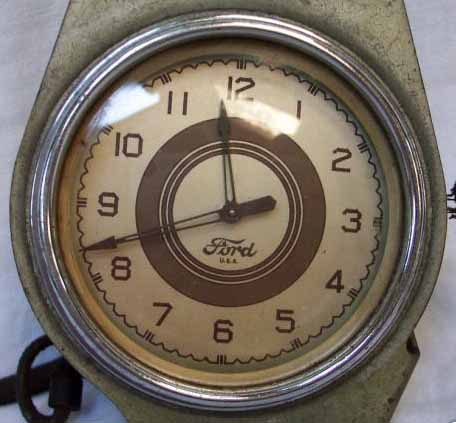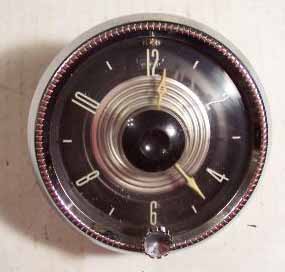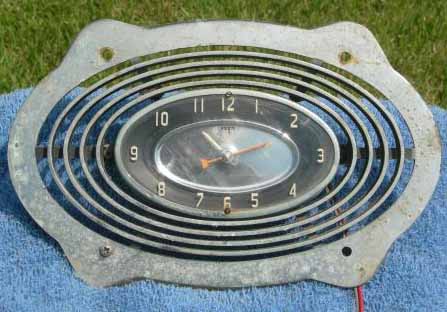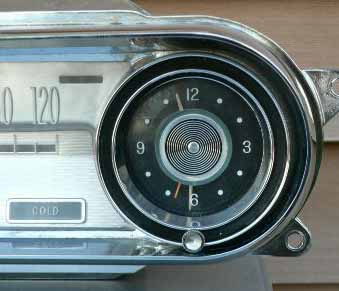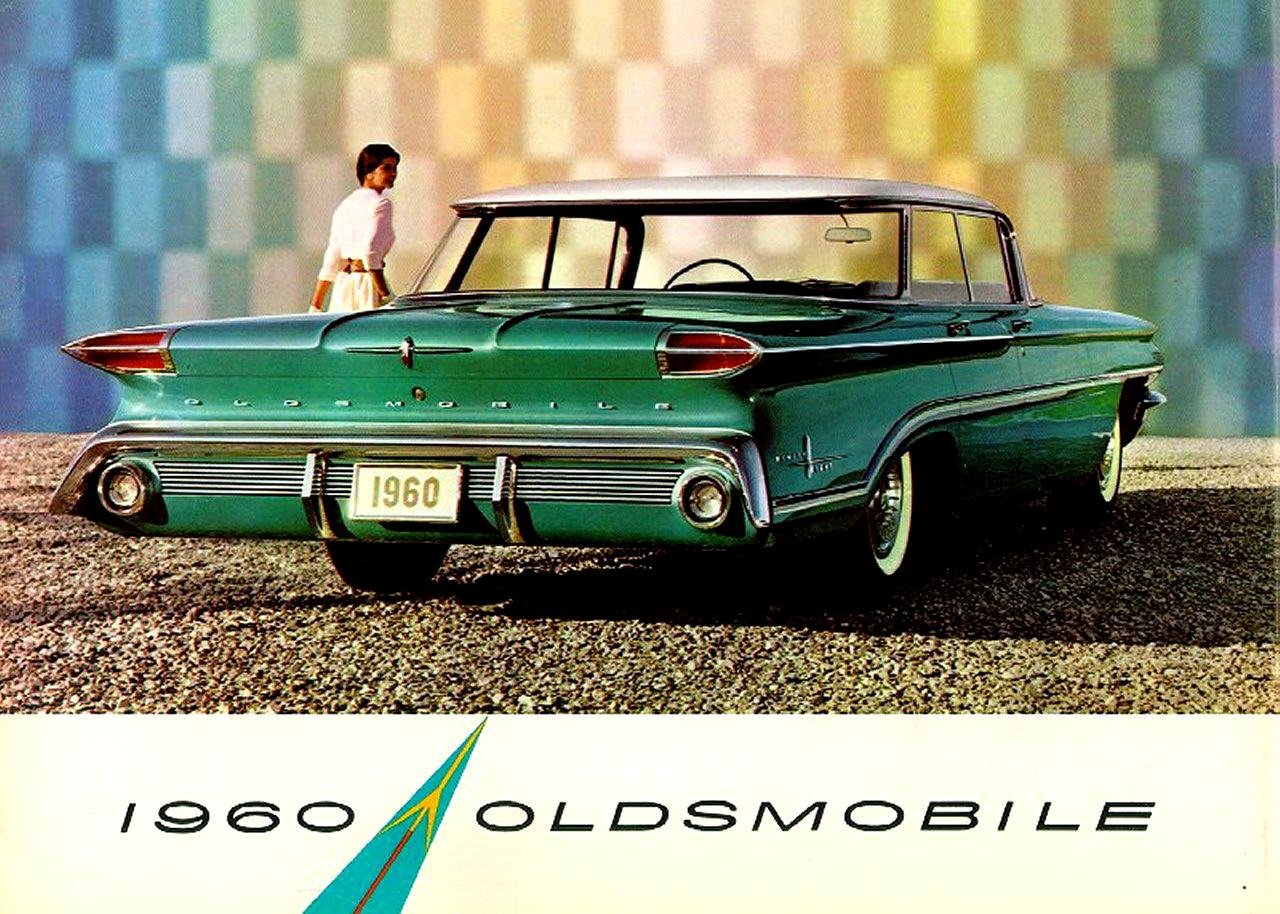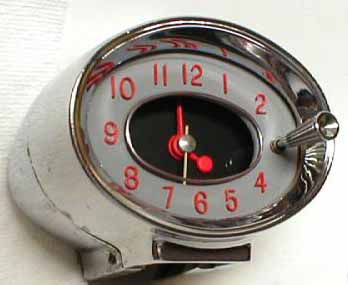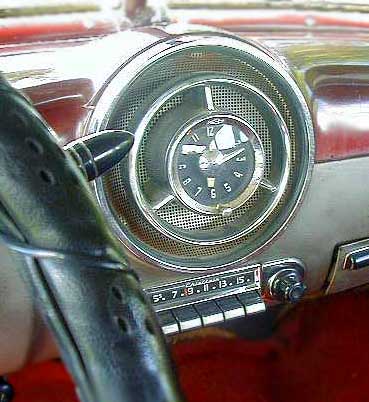
"Travelers have benefited from any number of portable timepieces over the years. During the 19th century, as more and more people began to travel by carriage, they needed timepieces that could travel with them. One such timepiece was the carriage clock, whose remarkably shockproof movement was perfected by the French watchmaker Abraham Louis Brequet in the late 18th century. In other instances, pocket watches were placed in leather holders that fit over the front board of the carriage. As inventors and manufacturers like Karl Benz, Gottlieb Daimler, Charles and J. Frank Duryea, Henry Ford, and Ransom E. Olds furthered development of the automobile, a new breed of clock was introduced—the car clock.
By 1908, speedometer companies were producing and marketing clocks as after-market accessories. Over the next decade, the car clock grew in popularity and several companies began catering to the growing market, including the Phinney-Walker Keyless Clock Company, the Warner Instrument Company, the Seth Thomas Clock Company, the Stewart Speedometer Company, the Chelsea Clock Company, and the Boston Clock Company. In some cases, there was a clear crossover between marine clocks and automobile clocks. Waltham, a major supplier of car clocks, marketed identical timepieces for both automobiles and boats.
From the NAWCC Museum
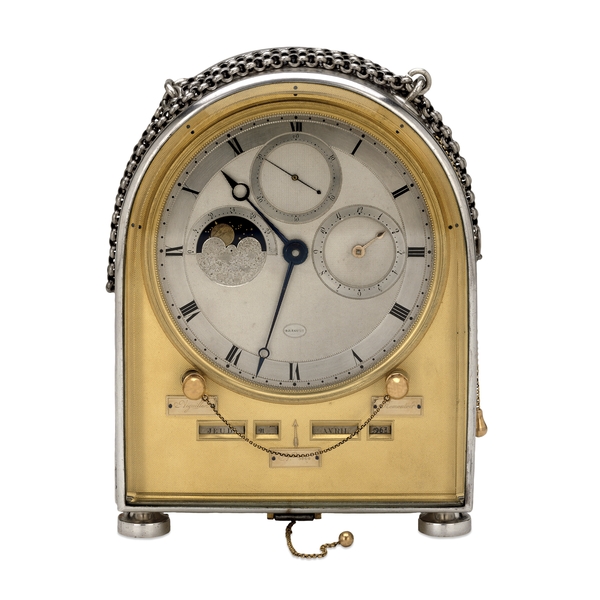 1822 Carriage Clock by Breguet
1822 Carriage Clock by Breguet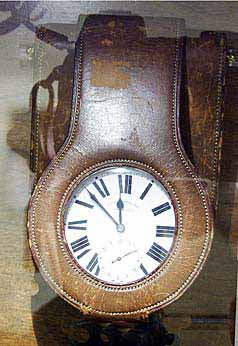 1905 Leather Dashboard Clock Holder
1905 Leather Dashboard Clock HolderThe "Time of Trip", the first dashboard chronograph patented by (TAG) Heuer in 1911, was designed for aircraft and automobiles. Its 11-cm diameter and its size are well suited for installation on all types of dashboards. The large hands at the centre of the dial indicate the time. The small pair of hands, at the 12 o'clock position, give the duration of the trip (not exceeding 12 hours). The same button is used to start, stop and reset the clock. A small window at the 3 o'clock position serves to monitor the proper operation of the device.
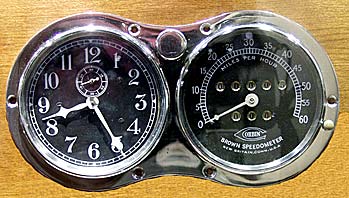 1912 Brown Clock-Speedometer
1912 Brown Clock-Speedometer 1925 Phinney-Walker Rim-Wind Car Clock
1925 Phinney-Walker Rim-Wind Car Clock 1925 Limosine Clock
1925 Limosine ClockThis car clock was made by Waltham for use in Cadillac limousines. The clock would have been mounted on the partition which separated the driver from the passenger compartment.
 1932 Jaeger
1932 JaegerAlong with Sterling Electric, Jaeger was a major manufacturer of 1930s car clocks. Their clocks could be seen in Cadillacs, Packards and Lincolns in the thirties. This clock was made for the Packard Super 8.
In 1933, Heuer introduced the "Autavia", a dashboard timer used for Automobiles and Aviation (and thus the name "Autavia"). The companion "Hervue" was a clock that had an 8-day movement (meaning that it could run for eight days without being wound).
 1941 Packard "Woody" 110 Station Sedan Dashboard Clock
1941 Packard "Woody" 110 Station Sedan Dashboard Clock "The Woody"
"The Woody" 1951 Ford
1951 Ford 1952 Pontiac Chieftain Deluxe Station Wagon
1952 Pontiac Chieftain Deluxe Station WagonOne of the most spectacular car clocks I've seen. The clock is by far the largest feature in the entire dashboard.
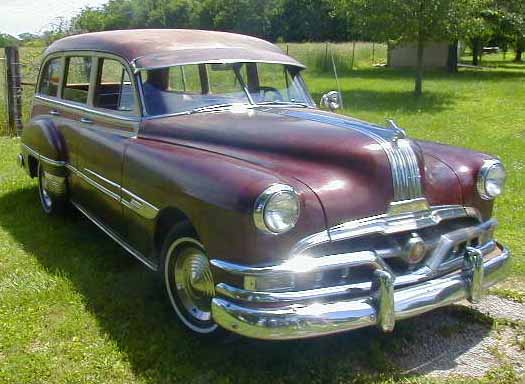 Chieftain Station Wagon
Chieftain Station Wagon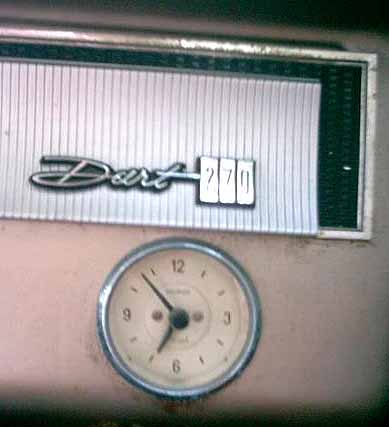 1965 Dodge Dart
1965 Dodge Dart 1970s Cadillac
1970s Cadillac 2006 Peugeot 908 RC concept car
2006 Peugeot 908 RC concept carby Bell & Ross
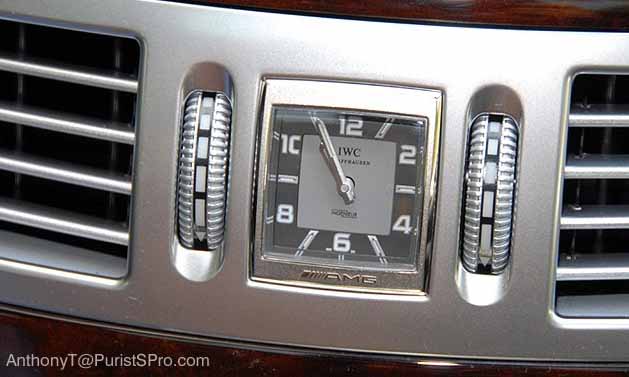 Watch brand, IWC with their clock
Watch brand, IWC with their clockin a Mercedes S63 AMG
Related Posts;
Radiator Grille Watches
Delorean Time DMC2 Wristwatch
Audemars Piguet Maserati Millenary MC12
Kienzle Life 2002 Jump Hour
Azimuth Chrono Gauge Mecha
Paul Smith Dashboard Watch
Heuer Silverstone
Heuer Ford Chronosplit
Tag Heuer Monaco V4 Belt Drive Watch
Formex Shock Absorber Watch
Gerald Genta Arena Chrono Quattro Retro
Parmigiani Bugatti Engine Block Watch
Manometro
Dunhill Petrolhead
Richard Arbib
B.R.M. Birotor
Driver Watches
| Watchismo Blog | Watchismo Shop | Contact Us | Subscribe |


